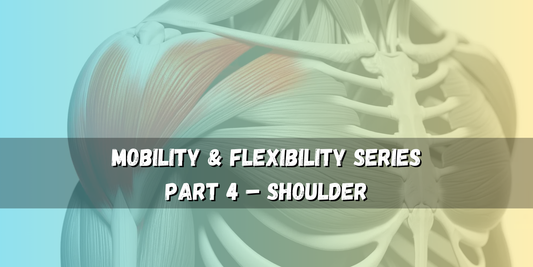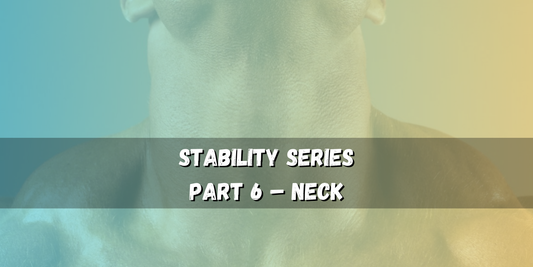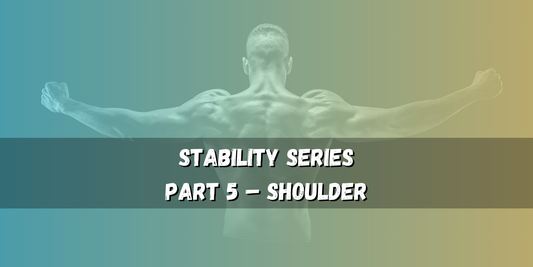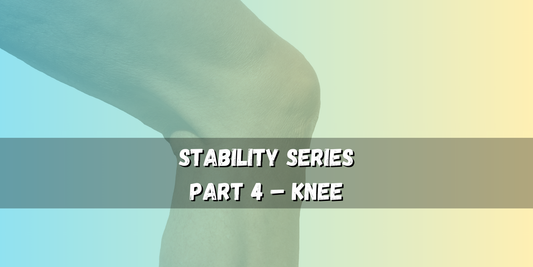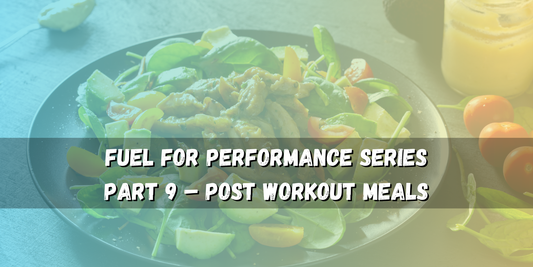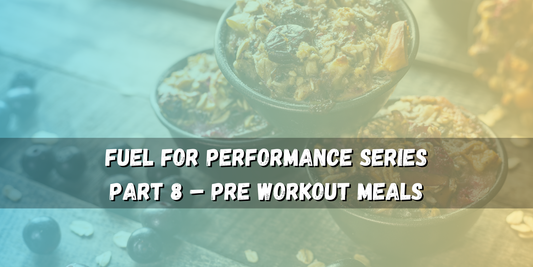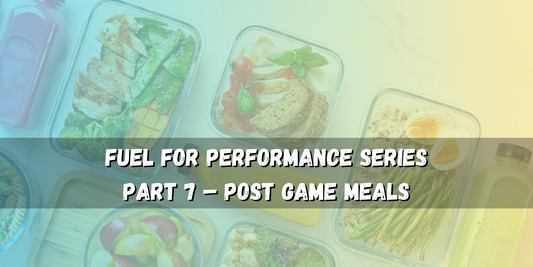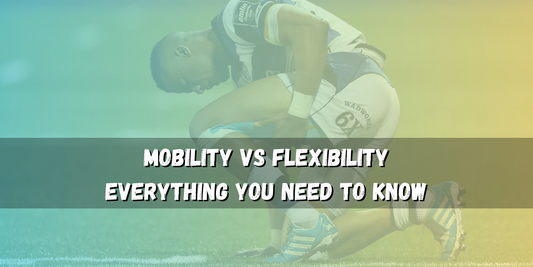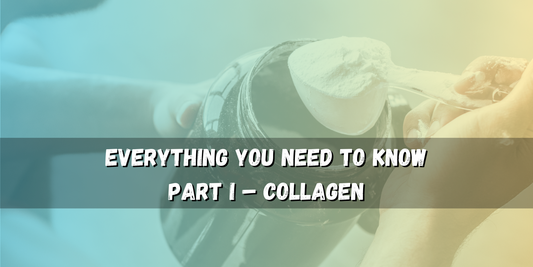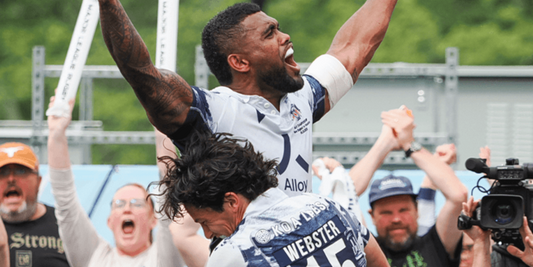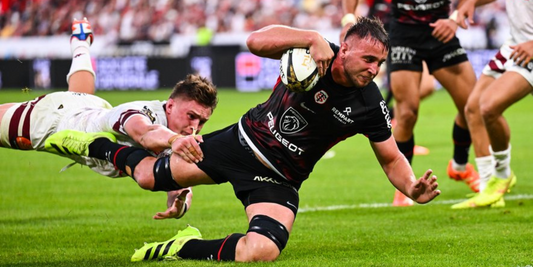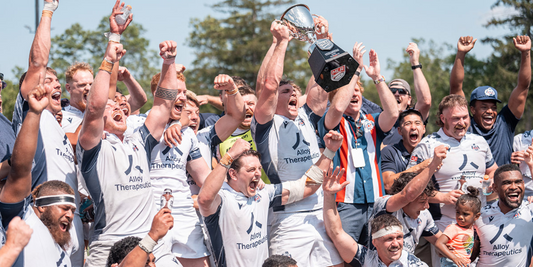Your hips are the powerhouse of your movement. Every sprint, sidestep, tackle, and jump begins with hip engagement. But it’s not just about strength—hip stability is what keeps everything aligned, from your knees to your spine. Without it, even the strongest athletes risk collapsing under pressure.
In Part 2 of our Stability Series, we’re unlocking hip stability—an essential foundation for movement control, injury prevention, and total-body coordination in rugby.
Check out the rest of the series:
- Part 1: Core Stability – Strength & Control
- Part 3: Ankle Stability – Balance & Support
- Part 4: Knee Stability – Control & Protection
- Part 5: Shoulder & Stability – Contact & Strength
- Part 6: Neck Stability – Impact & Safety
Let’s dive in.
WHAT IS HIP STABILITY?
Hip stability is your body’s ability to control the pelvis and femur during both static and dynamic movement—especially when standing on one leg, sprinting, or cutting. It involves coordinated strength and timing across several muscle groups:
Key Structures Supporting Hip Stability:
- Glute Medius & Minimus – Control lateral stability and keep the pelvis level.
- Glute Max – Powers hip extension and prevents inward collapse.
- Hip External Rotators (Piriformis, Deep Rotators) – Stabilize the femur and control rotation.
- Adductors & Hamstrings – Balance out the hips and contribute to acceleration and deceleration.
Together, these muscles help you move powerfully while maintaining alignment across the lower body.
WHY HIP STABILITY MATTERS FOR RUGBY PERFORMANCE
1. Explosive Power
A stable hip allows you to produce more force through the legs—whether you’re driving in contact, breaking a tackle, or pushing through a scrum.
2. Movement Control & Cutting
Change of direction relies heavily on hip control. Without it, your knees and ankles compensate, and your balance suffers.
3. Knee Injury Prevention
One of the top causes of ACL and meniscus injuries in youth athletes is hip collapse. A weak or misfiring glute med can cause the knee to buckle inward during deceleration.
4. Postural Strength & Alignment
Whether you’re bracing in a tackle, fighting for leverage in a ruck, or setting up in a scrum, hip stability keeps your spine neutral and pelvis strong.
THE CHAIN REACTION: HOW POOR HIP STABILITY CAUSES INJURIES
- Weak Glutes → Pelvic Drop → Knee Valgus (inward caving) → ACL/MCL Strain
- Poor Rotational Control → Hip Internal Rotation Collapse → Groin Strains
- Hip Dominance Imbalance → Quad Overuse → Knee Pain & Hamstring Injuries
- Lack of Lateral Stability → Balance Loss in Cuts → Increased Fall or Tackle Risk
If the hips aren’t stable, the entire lower kinetic chain breaks down—starting at the pelvis and cascading into the knees, ankles, and spine.
THE HIP STABILITY ROUTINE EVERY RUGBY PLAYER NEEDS
Training hip stability means working in multiple planes of motion while reinforcing proper activation, alignment, and load tolerance.
Step 1: Soft Tissue Release & Activation (3–5 Minutes)
- Goal: Loosen tight areas and activate key hip stabilizers
-
Focus Areas: Glutes, TFL, piriformis, hip flexors
- Techniques: Foam roll glutes, IT band, and quads; Mini-band Glute Bridges; Side-Lying Clamshells
Step 2: Mobility & Control Drills (5–7 Minutes)
-
Goal: Improve hip range of motion and dynamic control
- Exercises: 90/90 Hip Series; Pelvic Tilts; Hip CARs
Step 3: Strength & Stability (5–8 Minutes)
-
Goal: Build single-leg strength, lateral control, and hip alignment
- Exercises: Step-Downs (focus on knee tracking); Single-Leg Glute Bridge with Toe Tap; Lateral Band Walk into Split Squat Hold; Single-Leg RDLs (bodyweight or light weight)
Repeat this sequence 2–3x per week. Control and form matter more than speed or load.
WATCH THE FULL ROUTINE
We’ve recorded the full Hip Stability Routine on our YouTube channel to walk you through every step—activation, mobility, and control drills.
Watch it now on our Peak Rugby YouTube Channel:
FINAL THOUGHTS
Hip stability is the unsung hero of athletic movement. It drives power, controls direction, protects your knees, and holds your posture when everything gets chaotic.
Stronger hips = safer, faster, more explosive movement.
Need More Help?
Check out our Rugby Workout Plans and Customized Training Programs to build a stronger, more resilient body.
This wraps up Part 2 of our Stability Series: Hip Stability. If you found this post helpful, make sure to:
- Like and share this post with fellow rugby players
- Bookmark the blog to stay updated on the next parts of the series
-
Follow Peak Rugby on X, Facebook and subscribe to the YouTube Channel for more rugby-specific training, mobility, and recovery tips.
Stay strong, keep pushing forward, and keep working on your stability!







